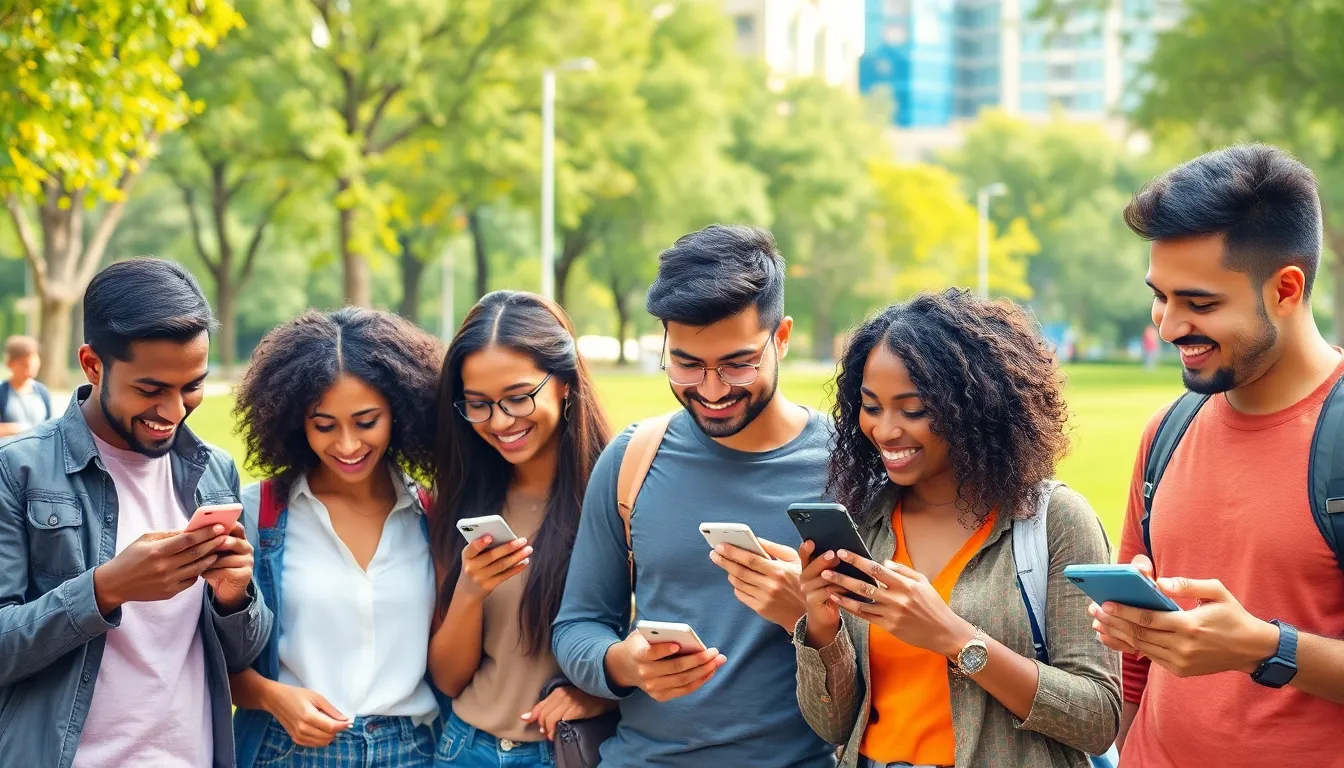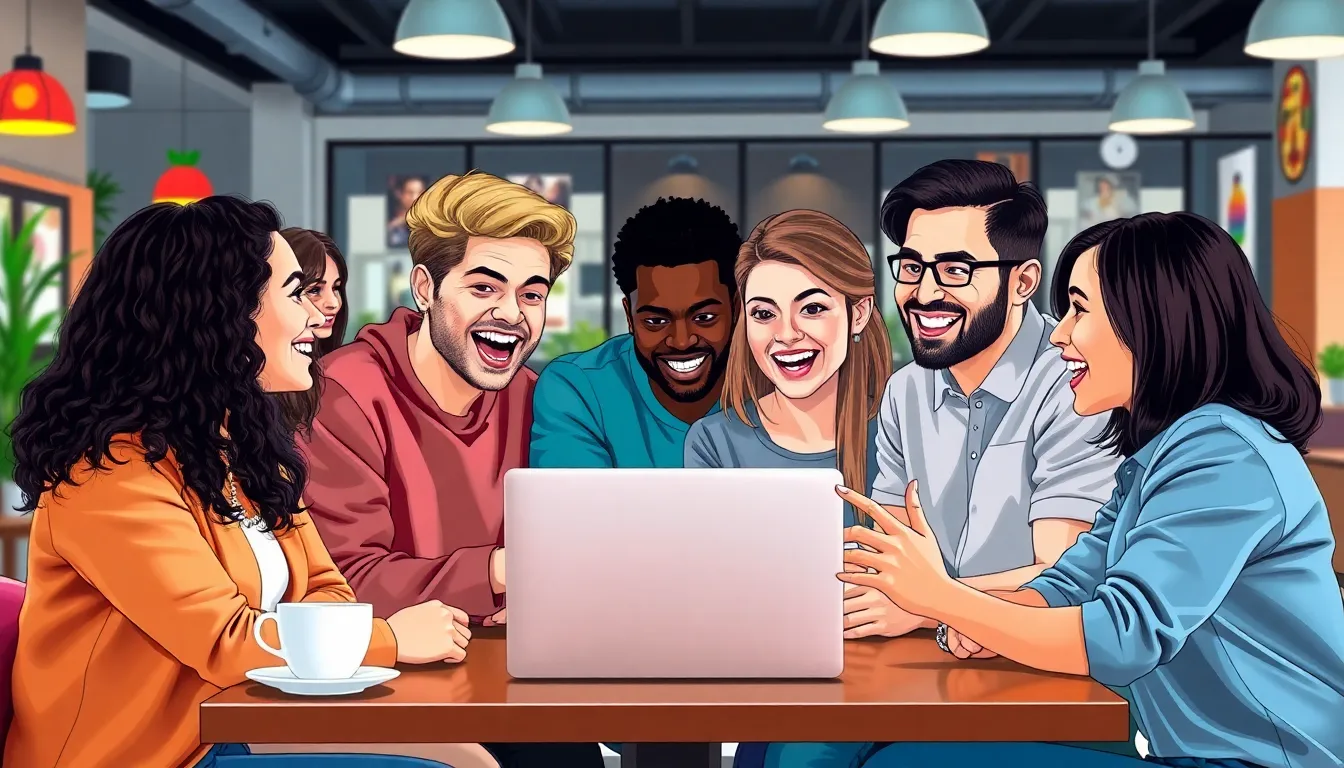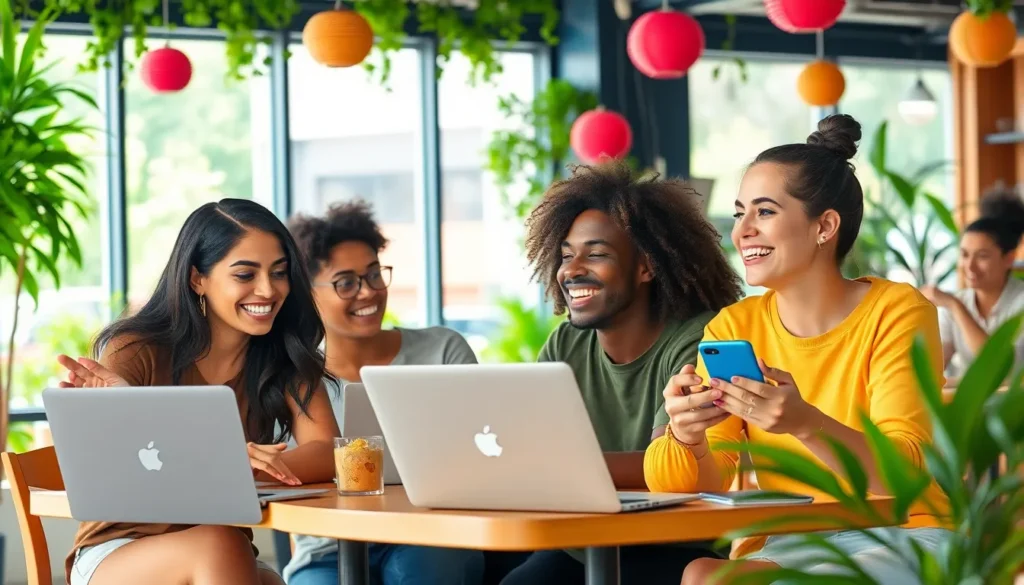Table of Contents
ToggleIn today’s digital age, social media isn’t just a place to share cat memes or food pics; it’s the heartbeat of modern communication. With billions of users scrolling, liking, and commenting, the way people interact online can make or break brands, friendships, and even the occasional awkward family reunion. It’s a wild world where a single tweet can spark a trend or a post can go viral faster than you can say “hashtag.”
Overview of Social Media Interaction
Social media interaction encompasses the ways users engage with content across various platforms. Engaging comments, shares, likes, and reposts represent primary forms of interaction. Brands leverage these interactions to measure audience sentiment and gain insights into consumer preferences. Influencers and public figures utilize social media to establish connections with their followers, enhancing relationship dynamics.
User-generated content plays a significant role in social media interaction. Users often create and share content that reflects their experiences, opinions, and creativity. This content can generate discussions, driving further engagement. Viral moments showcase how quickly interactions can escalate, often leading to widespread digital conversations.
A substantial body of research indicates that interaction increases brand loyalty. Engaged users are more likely to advocate for brands they connect with online. Social media platforms facilitate conversations between consumers and brands, allowing instant feedback and fostering a sense of community.
Metrics such as engagement rate and reach provide critical insights into the effectiveness of social media interaction strategies. Brands that analyze these metrics can refine their content and approach. Social listening tools enable businesses to track conversations about their brand and industry, informing their strategies.
Understanding the nuances of social media interaction is vital for businesses. Users expect timely responses and personalized engagement. Meeting these expectations enhances user satisfaction and strengthens community ties. Positive interactions not only retain existing audiences but also attract new followers, amplifying brand presence.
Importance of Social Media Interaction


Social media interaction plays a pivotal role in modern communication. It enhances engagement between brands, influencers, and consumers, creating a dynamic environment for dialogue.
Enhancing Communication
Direct interactions on social media streamline communication. Brands gain immediate feedback through comments and messages. This feedback loop allows organizations to address concerns swiftly. Responses can adjust strategies according to audience preferences. Users appreciate when brands actively engage, fostering an open exchange of ideas. Notifications about updates and promotions increase visibility and encourage participation. Enhanced communication strengthens brand messaging, ensuring it resonates with the target audience.
Building Relationships
Relationships flourish in the interactive nature of social media. Followers interact with content and feel a personal connection to brands. Trust develops as brands showcase authenticity through genuine interactions. Regular engagement builds community and loyalty among users. Influencer collaborations further amplify this relationship, as followers admire these trusted figures. Engaging content encourages sharing, expanding the brand’s reach within user networks. Strong relationships translate to increased advocacy, with users promoting brands they love through organic word-of-mouth.
Types of Social Media Interaction
Social media interaction includes various forms that enhance communication and engagement. Understanding these types helps brands effectively connect with their audiences.
User Engagement Strategies
User engagement strategies focus on methods that encourage audience participation. Brands utilize polls, quizzes, and interactive stories to capture attention. Encouraging comments enhances discussions, fostering a sense of community. Live Q&A sessions allow real-time interaction, where audiences can ask questions and receive immediate responses. Addressing user feedback creates a personalized experience, further building loyalty. These strategies not only elevate user satisfaction but also enhance brand visibility. Actively monitoring engagement metrics enables brands to refine their approaches.
Content Sharing and Virality
Content sharing amplifies brand reach and enhances visibility. When users share posts, it spreads awareness to their networks. Engaging content, such as memes and videos, often goes viral, increasing audience interaction. Utilizing trending hashtags boosts discoverability, making it easier for new users to find brands. Influencers play a vital role in sharing compelling content, impacting followers’ perceptions. The dynamics of sharing drive conversations and discussions across platforms. Marketers can analyze which types of content generate the most shares, informing future campaigns.
Impact of Social Media Interaction on Society
Social media interaction significantly influences various aspects of society. These interactions create both positive and negative effects on individuals and communities.
Positive Effects
Social media interaction enhances communication and connects individuals across the globe. Increased engagement fosters collaboration, allowing for diverse perspectives to emerge on many topics. Brands notice that user-generated content strengthens relationships, as customers often feel a deeper connection when engaging with brands they support. Group discussions and online communities promote a sense of belonging, encouraging users to share experiences and resources. Additionally, social media acts as a platform for social movements, amplifying voices that drive change. This type of engagement also promotes transparency, as brands can gain immediate feedback and make necessary adjustments to their strategies.
Negative Effects
Social media interaction can lead to misinformation and polarization within society. Users may encounter false information that spreads rapidly, creating confusion and distrust. Cyberbullying is another serious concern, as individuals may experience harassment and negative comments online. This behavior often has detrimental effects on mental health, causing anxiety and depression among victims. Privacy concerns also arise, with users sometimes unaware of data exploitation by platforms. Furthermore, excessive interaction may lead to social isolation, as individuals prioritize online communication over face-to-face relationships. This combination of factors highlights the complexities of social media’s impact on societal dynamics.
Social media interaction serves as a powerful tool in shaping modern communication. It fosters connections between brands and consumers while driving engagement that can lead to loyalty and advocacy. The dynamic nature of these interactions not only influences trends but also cultivates communities where users feel valued and heard.
While the positive impacts are clear, it’s essential to remain aware of the challenges that accompany social media. By embracing the benefits and addressing the pitfalls, brands and individuals alike can navigate the complexities of online interactions. Ultimately, the ongoing evolution of social media will continue to redefine how people connect and communicate in an increasingly digital world.







